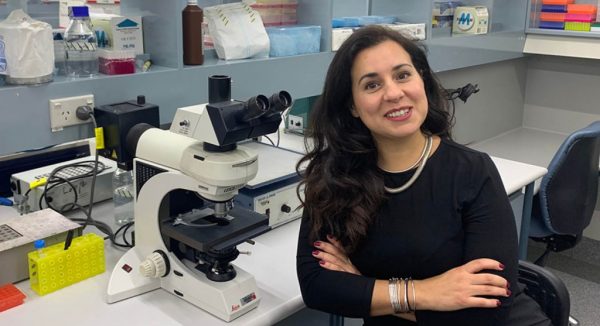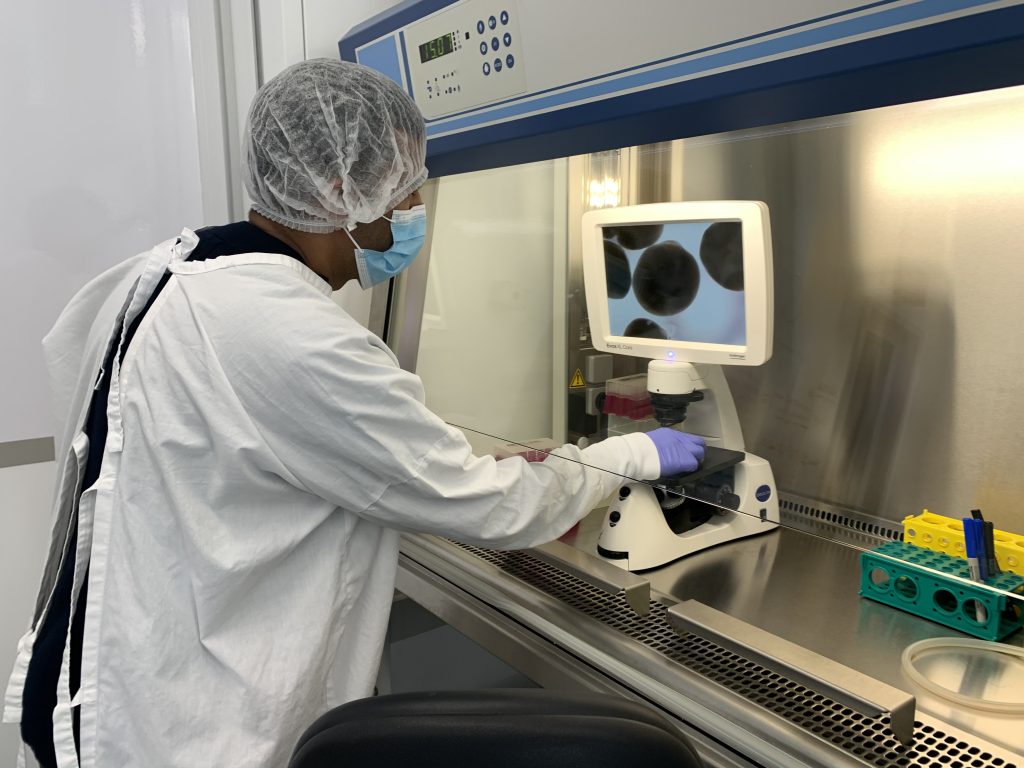Australian Researcher Awarded for Creation of 3D Mini Organs Restoring Sight in Children
“The patient’s cells are transformed into stem cells, which are the raw material – the gold in a gold mine, which we then refine into fine and functional ‘jewellery’,” Dr Anai Gonzalez Cordero, Head of the Stem Cell Research Group and manager of the Stem Cell and Organoid Facility at the Children’s Medical Research Institute.

No longer the stuff of sci-fi, three-dimensional mini organs, grown in a Petri dish in a lab, are playing a key role in the quest to restore sight and hearing in people born with inherited eye and ear diseases.
Derived from a patient’s own cells and known as organoids, these little gems represent a treatment breakthrough in an area where until recently there has been a lack of options for such conditions.
“The patient’s cells are transformed into stem cells; these are the raw material – the gold in a gold mine, which we then refine into fine and functional ‘jewellery’,” says Dr Anai Gonzalez Cordero, Head of the Stem Cell Research Group and manager of the Stem Cell and Organoid Facility at the Children’s Medical Research Institute (CMRI).
She explains that an organoid mimics complex tissues and organs. This directs stem cells toward a niche, or highly specialised, function. The organoids are often referred to as ‘mini organs’ because they look and act similar to the tissues in actual organs.
“For example, we can take skin or blood cells from a person with inherited eye disease, turn them into induced pluripotent stem cells (iPSCs) and then grow these into a mini model of the patient’s retina – a replica of their condition,” she says. “We can then understand the disease and identify the “problem” gene in the specific cells within the retina known as rods and cones, also called photoreceptor cells. These are the cells that convert light into signals sent to the brain, allowing us to see sizes, shapes, brightness and colours
“From the patient’s own retinal organoids, we aim to develop a gene-based therapy to correct their specific problem gene and treat the patient’s disease, which can also be tested in the laboratory on the very same organoids.”
The Stem Cell and Organoid Facility at CMRI is the only one of its kind in Australia and Dr Gonzalez Cordero’s team has perfected the culturing of organoids from iPSCs that can give rise to any type of cell within the body.

Eye on the Prize
In recognition of this work, Dr Gonzalez Cordero has been awarded the 2022 Metcalf Prize– the most prestigious stem cell research award in Australia – by the National Stem Cell Foundation of Australia.
“This prize recognises the hard work of my team and that of the Australian stem cell research community with whom we collaborate extensively,” she says. “Our colleagues have been extraordinarily welcoming and helpful since we established at CMRI just three years ago. I am also very grateful to NSW Health for funding our facility through Luminesce Alliance grants. Without this, I couldn’t have got the lab up and running”.
In this brave new world of precision medicine, organoids are now being used by clinicians and researchers to better understand disease progression and test targeted treatments for diseases of the eye, brain, ear, kidney, and heart.
This area of research was largely spearheaded by investigations into inherited conditions that cause blindness in children.
The two main genetic conditions being studied by Dr Gonzalez Cordero and her team are Stargardt disease, a rare genetic eye disease that happens when fatty material builds up on the macula — the small part of the retina needed for sharp, central vision — and Usher syndrome which is caused by a change in one or more genes resulting in vision and hearing loss.
“The first area of our research is to further understand and characterise the disease features in the human photoreceptor cells in the organoids and to create the gene therapy to treat these features. The second is to obtain healthy cells and turn them into iPSCs and retinal organoids to generate photoreceptor cells. These cells are then used to replace the photoreceptor cells lost due to disease. We are developing this cell therapy as a universal approach to treat many inherited retinal diseases.
“Gene therapy is either replacing or correcting a faulty gene directly inside the patient’s cells. Cell therapy is where we replace the faulty cell by transplanting it with healthy photoreceptor cells. Ideally, in both options, after one treatment the patient will have restored vision,” says Dr Gonzalez Cordero.
Seeing the Future
While her own research focuses on inherited retinal diseases that cause blindness, Dr Gonzalez Cordero is sharing her organoid expertise to support researchers across NSW and Australia.
“This research and the treatments we are proposing to deliver will not just benefit children with inherited diseases, but the technology we are developing is also applicable for adults with age-related and other conditions that cause vision loss, and a myriad of other diseases.”
“Using organoids in this way is a relatively new service that has never been available before in Australia,” says Dr Gonzalez Cordero. “Our hope is that it will speed up the development of safe and effective treatments for millions of children and adults worldwide, affected by genetic and acquired disorders.”
Updated 3 years ago